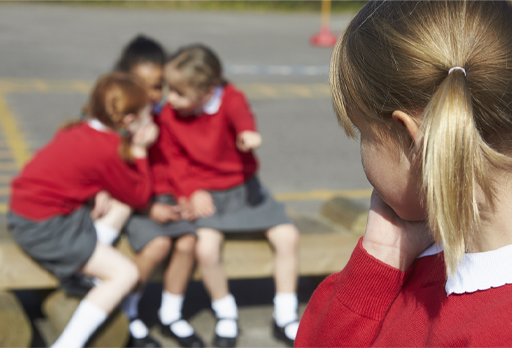Anti-bullying
Many schools’ bullying policies are aimed at responding to bullying once it has started. However, preventing and tackling bullying is an effective way of improving children’s mental health and wellbeing (Brown, 2019).
Examples of anti-bullying strategies that can be part of a school’s policy include the use of circle time, peer group councils and buddy schemes for pupils who are at risk of being bullied. Whole school approaches can include anti-bullying assemblies and a week dedicated to activities linked to anti-bullying.
For more information about the government’s guidance for schools, see ‘Preventing and Tackling Bullying’ [Tip: hold Ctrl and click a link to open it in a new tab. (Hide tip)] (Department for Education, 2017b).
On page 8 of the guidance, bullying is defined as follows:
Bullying is behaviour by an individual or group, repeated over time, that intentionally hurts another individual or group either physically or emotionally. Bullying can take many forms (for instance, cyber-bullying via text messages, social media or gaming, which can include the use of images and video) and is often motivated by prejudice against particular groups, for example on grounds of race, religion, gender, sexual orientation, special educational needs or disabilities, or because a child is adopted, in care or has caring responsibilities. It might be motivated by actual differences between children, or perceived differences. Stopping violence and ensuring immediate physical safety is obviously a school’s priority but emotional bullying can be more damaging than physical.
You have seen how policies that do not appear to be directly linked to supporting children’s wellbeing and improving their mental health can be instrumental in doing so. You may also have thought of other policies that could help to support children’s wellbeing.
By adopting a whole school approach where there is a supportive ethos and an environment where children can flourish, much can be done to prevent mental health problems from developing. However, some children will inevitably require further interventions, as you will see in the following section.

